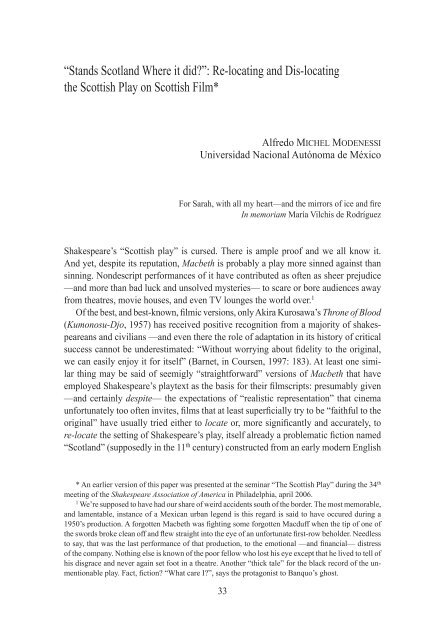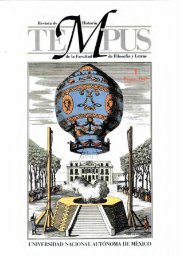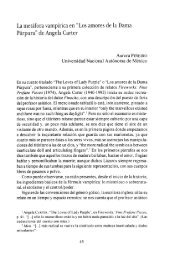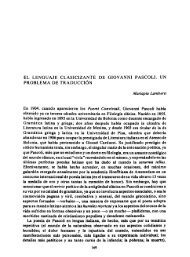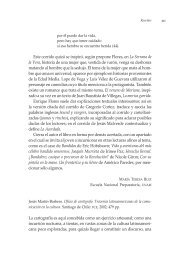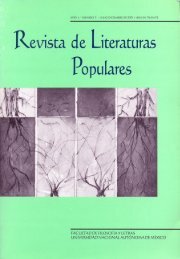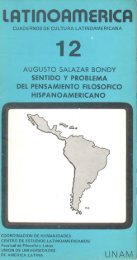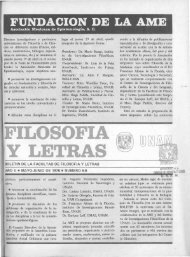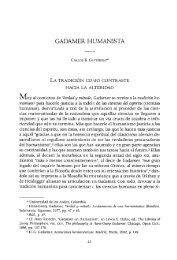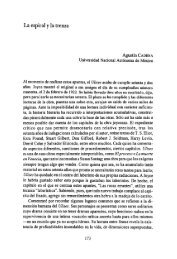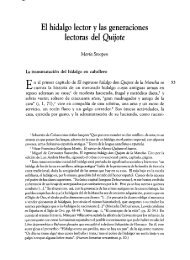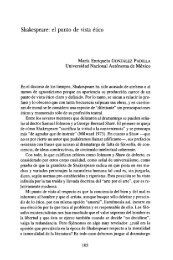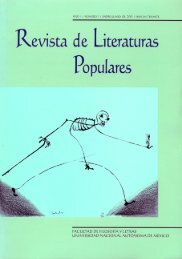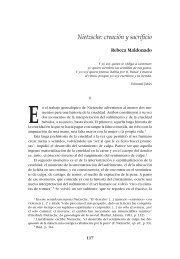Untitled - Repositorio de la Facultad de Filosofía y Letras. UNAM ...
Untitled - Repositorio de la Facultad de Filosofía y Letras. UNAM ...
Untitled - Repositorio de la Facultad de Filosofía y Letras. UNAM ...
Create successful ePaper yourself
Turn your PDF publications into a flip-book with our unique Google optimized e-Paper software.
“Stands Scot<strong>la</strong>nd Where it did?”: Re-locating and Dis-locating<br />
the Scottish P<strong>la</strong>y on Scottish Film*<br />
Alfredo Michel Mo<strong>de</strong>nessi<br />
Universidad Nacional Autónoma <strong>de</strong> México<br />
For Sarah, with all my heart—and the mirrors of ice and fire<br />
In memoriam María Vilchis <strong>de</strong> Rodríguez<br />
Shakespeare’s “Scottish p<strong>la</strong>y” is cursed. There is ample proof and we all know it.<br />
And yet, <strong>de</strong>spite its reputation, Macbeth is probably a p<strong>la</strong>y more sinned against than<br />
sinning. Non<strong>de</strong>script performances of it have contributed as often as sheer prejudice<br />
—and more than bad luck and unsolved mysteries— to scare or bore audiences away<br />
from theatres, movie houses, and even TV lounges the world over. 1<br />
Of the best, and best-known, filmic versions, only Akira Kurosawa’s Throne of Blood<br />
(Kumonosu-Djo, 1957) has received positive recognition from a majority of shakes-<br />
peareans and civilians —and even there the role of adaptation in its history of critical<br />
success cannot be un<strong>de</strong>restimated: “Without worrying about fi<strong>de</strong>lity to the original,<br />
we can easily enjoy it for itself” (Barnet, in Coursen, 1997: 183). At least one simi<strong>la</strong>r<br />
thing may be said of seemigly “straightforward” versions of Macbeth that have<br />
employed Shakespeare’s p<strong>la</strong>ytext as the basis for their filmscripts: presumably given<br />
—and certainly <strong>de</strong>spite— the expectations of “realistic representation” that cinema<br />
unfortunately too often invites, films that at least superficially try to be “faithful to the<br />
original” have usually tried either to locate or, more significantly and accurately, to<br />
re-locate the setting of Shakespeare’s p<strong>la</strong>y, itself already a problematic fiction named<br />
“Scot<strong>la</strong>nd” (supposedly in the 11 th century) constructed from an early mo<strong>de</strong>rn English<br />
* An earlier version of this paper was presented at the seminar “The Scottish P<strong>la</strong>y” during the 34 th<br />
meeting of the Shakespeare Association of America in Phi<strong>la</strong><strong>de</strong>lphia, april 2006.<br />
1 We’re supposed to have had our share of weird acci<strong>de</strong>nts south of the bor<strong>de</strong>r. The most memorable,<br />
and <strong>la</strong>mentable, instance of a Mexican urban legend is this regard is said to have occured during a<br />
1950’s production. A forgotten Macbeth was fighting some forgotten Macduff when the tip of one of<br />
the swords broke clean off and flew straight into the eye of an unfortunate first-row behol<strong>de</strong>r. Needless<br />
to say, that was the <strong>la</strong>st performance of that production, to the emotional —and financial— distress<br />
of the company. Nothing else is known of the poor fellow who lost his eye except that he lived to tell of<br />
his disgrace and never again set foot in a theatre. Another “thick tale” for the b<strong>la</strong>ck record of the unmentionable<br />
p<strong>la</strong>y. Fact, fiction? “What care I?”, says the protagonist to Banquo’s ghost.<br />
33


